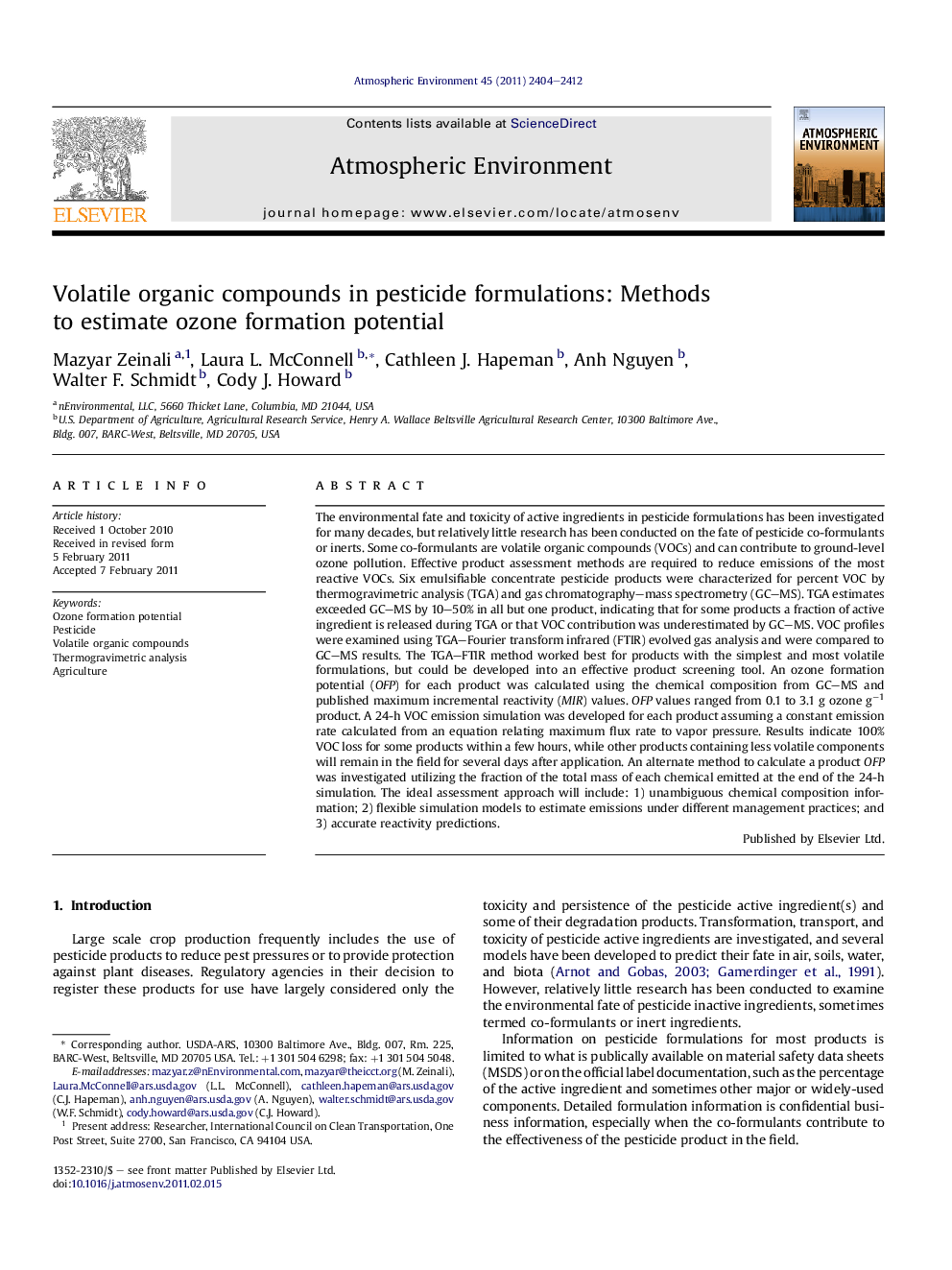| کد مقاله | کد نشریه | سال انتشار | مقاله انگلیسی | نسخه تمام متن |
|---|---|---|---|---|
| 4439735 | 1311031 | 2011 | 9 صفحه PDF | دانلود رایگان |

The environmental fate and toxicity of active ingredients in pesticide formulations has been investigated for many decades, but relatively little research has been conducted on the fate of pesticide co-formulants or inerts. Some co-formulants are volatile organic compounds (VOCs) and can contribute to ground-level ozone pollution. Effective product assessment methods are required to reduce emissions of the most reactive VOCs. Six emulsifiable concentrate pesticide products were characterized for percent VOC by thermogravimetric analysis (TGA) and gas chromatography–mass spectrometry (GC–MS). TGA estimates exceeded GC–MS by 10–50% in all but one product, indicating that for some products a fraction of active ingredient is released during TGA or that VOC contribution was underestimated by GC–MS. VOC profiles were examined using TGA–Fourier transform infrared (FTIR) evolved gas analysis and were compared to GC–MS results. The TGA–FTIR method worked best for products with the simplest and most volatile formulations, but could be developed into an effective product screening tool. An ozone formation potential (OFP) for each product was calculated using the chemical composition from GC–MS and published maximum incremental reactivity (MIR) values. OFP values ranged from 0.1 to 3.1 g ozone g−1 product. A 24-h VOC emission simulation was developed for each product assuming a constant emission rate calculated from an equation relating maximum flux rate to vapor pressure. Results indicate 100% VOC loss for some products within a few hours, while other products containing less volatile components will remain in the field for several days after application. An alternate method to calculate a product OFP was investigated utilizing the fraction of the total mass of each chemical emitted at the end of the 24-h simulation. The ideal assessment approach will include: 1) unambiguous chemical composition information; 2) flexible simulation models to estimate emissions under different management practices; and 3) accurate reactivity predictions.
► Pesticide products can contain volatile and reactive co-formulants.
► Reliable methods are needed to predict which products contribute to ozone pollution.
► Available methods to estimate ozone formation potential were tested on six products.
► Best results combined analysis with GC–MS and maximum incremental reactivity (MIR).
► Improved simulation models are needed to incorporate management practice effects.
Journal: Atmospheric Environment - Volume 45, Issue 14, May 2011, Pages 2404–2412